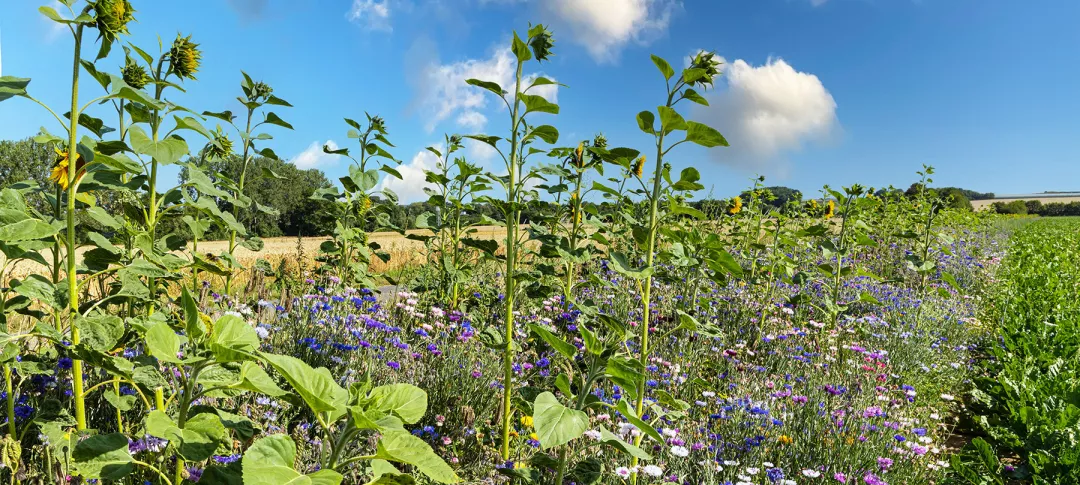Encouraging community-led nature restoration with LEADER
- CAP Implementation
- LEADER
- Agricultural Productivity
- CAP Strategic Plans
- Climate and Climate Change
- Communication
- Environment
- Food Supply Chain
- Long-term Vision for Rural Areas
- Networking
- Rural Development
- Sustainability
LEADER can encourage community-led nature restoration,and this provides possibilities for economic opportunities in the Member States.

Nature restoration represents an opportunity for EU funding systems because each euro that is invested by the EU in land restoration brings economic returns of EUR 8 to EUR 38. Funding from the Common Agricultural Policy (CAP), including its LEADER component, can help Member States optimise these economic possibilities from nature restoration actions.
Prospects for LEADER's funding of nature restoration projects are plentiful in the current programming period of CAP Strategic Plans (CSPs). CSP funds for LEADER, for instance, can support rural development projects by providing measurable contributions to the new Nature Restoration Law (NRL). This revised rule book, governing EU biodiversity and habitats, aims to restore a minimum of 20% of the EU’s land and sea areas by 2030, and all ecosystems requiring restoration by 2050.
Legal certainty about nature restoration is now established by the NRL, and its common foundation across the EU countries provides commitments to ensure the bloc's green growth. As such, Member States now need to implement agricultural measures that prove positive trends in various indicators such as the grassland butterfly index, share of agricultural land with high diversity landscape features, and farmland bird index, while also reversing the damaging decline in pollinator populations. There are further obligations regarding drained agricultural peatlands and implementing effective grassland management strategies.
A new Thematic Group at the EU CAP Network is bringing together EU experts on biodiversity and CSP implementation. This will help farmers, advisory systems, and other stakeholders understand how to better share and strengthen their combined capacities for conserving biodiversity at the landscape level (going beyond single farms). The TG also seeks to improve essential habitat connectivity.
LEADER Local Action Groups (LAGs) are within the Thematic Group's target group, and LEADER's 30 years of experience with supporting nature projects offers useful insights for inspiration and replication.
Locally-led action
LAGs can help facilitate community-based development solutions that restore nature and support biodiversity. Close to 3 000 LAGs are operational at the village level throughout rural Europe, and these provide a direct channel for top-down nature policy principles to be converted into real-life, on-the-ground practice through a very wide web of localised bottom-up projects. LAGs are also in a unique position to use their critical mass of expertise to provide feedback for CSP managing authorities from community perspectives on using EU funds to implement nature restoration projects.
Farms, forests, and water remain key areas of opportunity for LAG funding to help restore EU nature. Project possibilities are diverse, and include LEADER support for projects focusing on pollinators, soil conservation, farmland birds, and habitat connectivity. Here LAGs can also co-finance bottom-up approaches promoting climate-resilient agroecology such as regenerative or organic farming, as part of the CSP's green architecture.
An eclectic collection of case studies showing LEADER's potential for nature restoration can be found in the EU CAP Network database on CAP-funded projects . This can be searched to find many LEADER projects that have been identified as good practice by Member States in LAG funding for environment, climate change, sustainability, Green Deal, and forestry projects (among other search filters).
Leading on local nature restoration
Good practice examples of LEADER possibilities for flora and fauna support are illustrated by:
- Austria's Flowering and Humming ‘Wipptal’ project providing information and raising awareness about wild bee protection.
- BiomMap developed a community-based tool for locally-led biodiversity diagnosis that feeds into regional decision-making about nature restoration in Belgium.
- A Slovakian nature trail combines environmental aims (bee conservation) with educational and cultural purposes.
- Cranes and Little Owls have been the beneficiaries of LAG funding for farmland birds in Germany.
Landscape features have been another priority in LEADER communities and LAGs have helped in the following types of ways:
- French inter-territorial cooperation supported the development of a system for verifying traceability and sustainable management of wood from hedgerows.
- DorfBioTop raised awareness on species protection for buildings, woody plants, village ponds, meadow orchards, public beds, and other habitats in the project area.
- LEADER funds helped innovative use of water buffaloes to preserve wetland landscapes for biodiversity in designated conservation areas.
- LAG business funding focused on the control of invasive alien species threatening woodland zones in Ireland.
LAGs are also able to help improve soil and grasslands, such as:
- Supporting a multi-national competence centre for natural resources and biodiversity.
- Motivating more uptake of CAP funding for nature in pastures, wetlands, and other farmed habitats.
- LAG funding helping farmers better understand fertiliser needs and soil nutrient composition.
- Building capacity to apply a practical tool kit for community-led improved soil health.